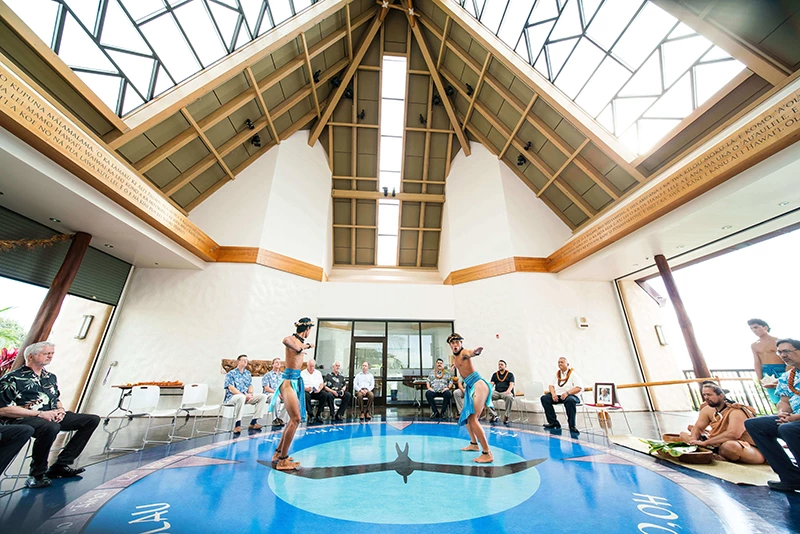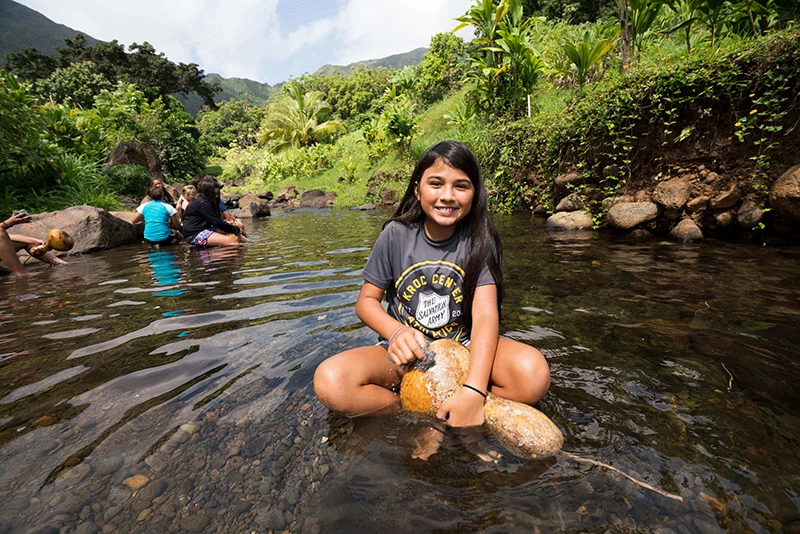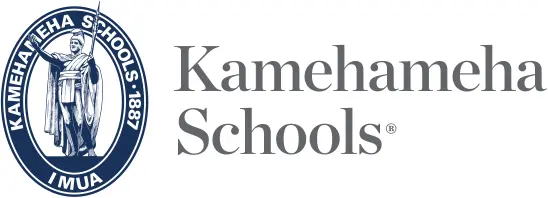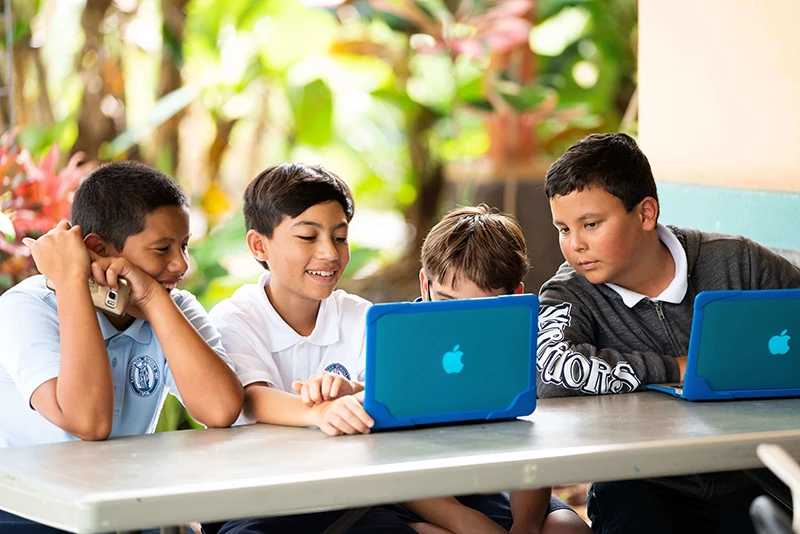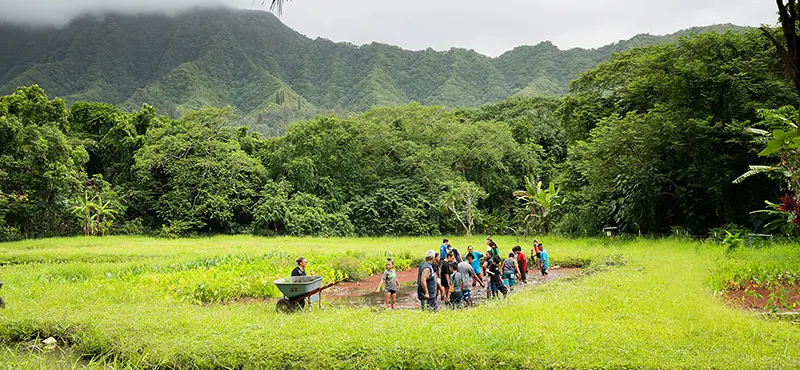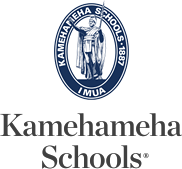The first-ever ‘Aimalama Lunar Conference was held recently at the University of Hawaiʻi at Mānoa East West Center, on the aliʻi lands of Victoria Kamāmalu at Kānewai. The conference focused on reviving and reconnecting traditional lunar calendar wisdom to daily practices.
Born from the success of the 2014 Kaulana Mahina (Hawaiian lunar calendar) practitioner symposium, the three-day event brought together over 150 participants from Hawaiʻi and the Pacific, to share methodologies of cultural practices informed by the lunar cycle.
KS Cultural Researcher and Instructor Kalei Nu‘uhiwa served as conference co-organizer and a panelist along with former Director of Natural and Cultural Resources Ulalia Woodside.
Attendees included many cultural practitioners from various community groups, educational partnerships, and conservation organizations. Faculty and staff members from Kamehameha’s Community Engagement and Resources (CE&R) Group, Hoʻokahua Cultural Vibrancy Group, KS Kapālama Middle School, and KS Maui campus joined in on the learning.
Conference panelists spoke about topics including mahi iʻa (aquaculture), mahiʻai (agriculture), birthing/healing, education, resource management, and the use of lunar calendar tools.
In line with ma ka hana ka ‘ike (learning through doing), conference attendees put discussion into practice by visiting Native Hawaiian community organizations including MAʻO Organic Farms, Kumuola Foundation, Hoʻoulu ‘Āina, and KS ‘āina-based education collaborators Papahana Kuaola and Paepae o Heʻeia.
These huakaʻi allowed conference participants to meet and work with community organizations that incorporate the Hawaiian lunar calendar into their mālama ‘āina practices.
“Kamehameha Schools is honored to sponsor the first annual ʻAimalama Lunar Conference and support Kalei Nuʻuhiwa’s extensive research and teaching of the Hawaiian lunar calendar,” said Woodside.
“Having practitioners from around Hawaiʻi and the Pacific join together to share their passion and manaʻo on how to revitalize lunar practices will provide critical insight to our efforts to mālama our ʻāina. This will require a group effort, including tapping into generational knowledge of our kūpuna, in order to see a change.”
KS partners with community-based organizations to conduct eco-cultural education on its agriculture and conservation lands extending its educational reach beyond its three K-12 campuses.
As the eyes of the world gazed upon a rare Hōkū Supermoon Eclipse, lunar calendar practitioners from across the Paeʻāina and the Pacific wrapped up an insightful weekend of discussion and learning at the ‘Aimalama Lunar Conference.
View the online 2016 Ke Ala o ka Mahina (Hawaiian Moon Calendar) created by Kamehameha Publishing.
‘Auhea wale ‘oe mahina ‘o Hōkū, hōʻike aʻe ‘oe i kou nani.
Where are you tonight full moon of the night? Do reveal your beauty.
From the mele “Mahina ‘o Hōkū” by Lillian Awa

Conference attendees learned about the importance of kilo, which is to carefully observe your surroundings.

ʻĀimalama Conference co-organizer and KS cultural researcher/instructor Kalei Nuʻuhiwa emphasizes the importance of knowing each region's lunar practices.
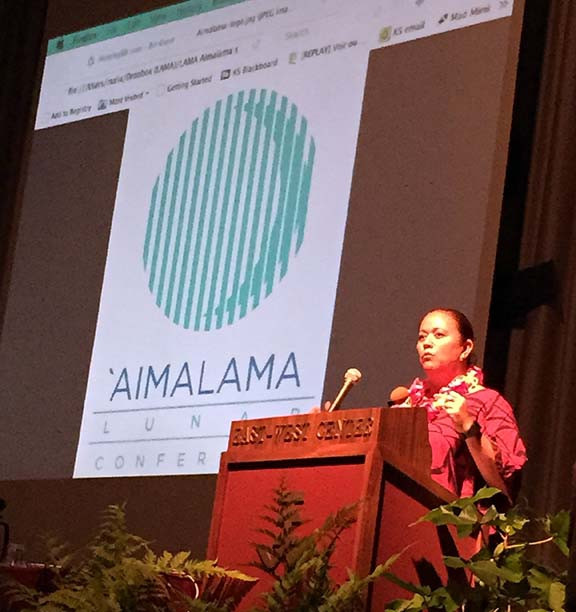
Former KS Director of Natural and Cultural Resources Ulalia Woodside encourages making new lunar observation methods the norm in natural resource management.

This story was penned by KS Natural Resources Intern Pua‘ala Pascua.
TAGS
natural and cultural resources,
natural resource management plan,
hawaiian culture based education,
strategic plan,
sp 2020,
community engagement and resources,
ce&r,
sustainability,
sp2020
CATEGORIES
Kaipuolono Article, Newsroom, Community Education, Community Events, Department News, LAD News
Print with photos
Print text only

